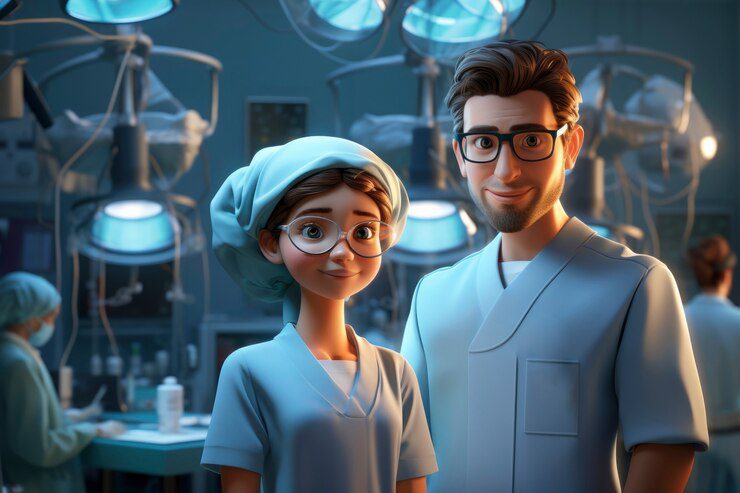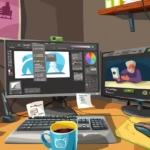The integration of 3D animation services in healthcare has revolutionized the way medical professionals communicate complex medical information to patients. Traditional methods, such as verbal explanations and static images, often fail to convey intricate medical processes clearly. With animation studios Los Angeles leading the innovation in medical animations, the healthcare industry is witnessing a significant transformation in patient education, diagnosis, and treatment planning.
From explaining surgical procedures to illustrating drug mechanisms, 3D product animation services provide immersive, visually compelling representations that enhance patient comprehension and confidence. This article explores how 3D animation services are improving patient understanding in healthcare, covering key applications, benefits, and the future of medical animations.
The Role of 3D Animation in Patient Education
1. Visualizing Complex Medical Procedures
One of the biggest challenges in healthcare communication is explaining intricate medical procedures to patients. 3D animation services bridge this gap by providing clear, step-by-step visualizations of surgeries, treatments, and anatomical functions.
For instance, a patient undergoing heart surgery may struggle to grasp the complexities of coronary artery bypass grafting (CABG) through verbal explanations. However, an animated video showcasing the blocked artery, the bypass graft, and the overall procedure can make the concept much clearer. Animation studios Los Angeles have developed high-quality 3D medical animations that effectively illustrate these intricate procedures, ensuring patients fully understand their medical conditions and treatment plans.
2. Enhancing Drug Mechanism Explanations
Pharmaceutical companies use 3D product animation services to explain how drugs interact with the human body. Traditional patient information leaflets often fail to engage or educate patients effectively, leading to misunderstandings or medication misuse.
Through 3D animation services, patients can visually comprehend how a medication works at the cellular level, its impact on specific organs, and potential side effects. For example, an animation showing how insulin regulates blood sugar in diabetic patients can significantly improve adherence to prescribed treatments.
3. Educating Patients About Medical Devices
Patients who require medical devices such as pacemakers, prosthetics, or insulin pumps need clear instructions on their usage and maintenance. 3D animation services provide interactive and engaging content that demonstrates the correct way to use these devices.
For instance, an animated tutorial on how to insert and maintain a continuous glucose monitor (CGM) can help diabetic patients use the device correctly, reducing errors and improving health outcomes.
How 3D Animation Aids in Doctor-Patient Communication
1. Improving Informed Consent
Informed consent is a crucial aspect of healthcare, ensuring that patients understand the risks, benefits, and alternatives of medical procedures before agreeing to them. Unfortunately, medical jargon often creates confusion, leaving patients uncertain about their decisions.
3D animation services simplify the informed consent process by providing clear, visual explanations of medical procedures, risks, and expected outcomes. Studies have shown that patients presented with animated consent videos have higher retention rates compared to those receiving traditional verbal explanations.
2. Bridging Language and Literacy Barriers
A significant number of patients struggle with medical literacy or language barriers, making it difficult for them to comprehend their diagnoses and treatment plans. 3D animation services overcome this challenge by offering multilingual animations or animations that rely on visuals rather than text-heavy explanations.
For example, animation studios Los Angeles have created animations for global healthcare providers, ensuring that patients from diverse linguistic backgrounds can access medical information in a way that is easy to understand.
3. Enhancing Telemedicine and Remote Consultations
With the rise of telemedicine, doctors often struggle to explain medical conditions to patients remotely. 3D animation services improve virtual consultations by providing pre-recorded or real-time animations that explain diagnoses and treatment options.
For instance, a doctor conducting a remote consultation for a spinal condition can use 3D product animation services to visually demonstrate the problem and the recommended treatment plan, ensuring patients fully understand their condition without an in-person visit.
Applications of 3D Animation in Different Medical Fields
1. Surgery and Preoperative Education
3D animation services are extensively used in surgical education, helping patients visualize their procedures before undergoing surgery. Preoperative animations reduce anxiety, enhance understanding, and improve patient cooperation.
For example, orthopedic surgeons use 3D product animation services to demonstrate joint replacement surgeries, showcasing how implants are placed and the expected recovery process.
2. Oncology and Cancer Treatment
Cancer patients often find it challenging to understand tumor growth, metastasis, and treatment options. 3D animation services provide visual explanations of chemotherapy, radiation therapy, and surgical interventions, ensuring patients comprehend their treatment journey.
For example, an animation depicting how radiation therapy targets and destroys cancer cells can reassure patients and encourage adherence to treatment plans.
3. Pediatrics and Child Healthcare
Children often fear medical procedures due to a lack of understanding. 3D animation services create engaging, child-friendly animations that explain vaccinations, dental procedures, and hospital visits in a way that alleviates fear and anxiety.
For instance, an animated story featuring a cartoon character receiving a vaccine can help young patients feel more comfortable with immunizations.
4. Dentistry and Oral Health
Dental procedures can be intimidating for many patients. 3D product animation services help dentists explain orthodontic treatments, dental implants, and oral hygiene practices in a visually appealing way.
For example, an animation demonstrating how braces gradually align teeth can help patients commit to their orthodontic treatment plans.
The Future of 3D Animation in Healthcare
1. Integration with Virtual Reality (VR) and Augmented Reality (AR)
The future of 3D animation services in healthcare lies in the integration of VR and AR technologies. Medical professionals are increasingly using VR-based animations to provide immersive educational experiences for patients.
For example, AR applications allow patients to use their smartphones or AR glasses to visualize how a pacemaker functions inside their body, enhancing understanding and comfort levels.
2. AI-Powered Personalized Animations
AI-driven 3D product animation services will enable personalized medical animations tailored to individual patient needs. This customization will further improve patient engagement and comprehension, leading to better treatment adherence and outcomes.
3. Expansion of Animation Studios in Healthcare
With healthcare organizations recognizing the value of 3D animation services, animation studios Los Angeles and other global animation firms are expanding their focus on medical animations. This growth will lead to more sophisticated and accessible animations for a broader audience.
Conclusion
The use of 3D animation services in healthcare is transforming patient education, making complex medical information more accessible and understandable. From improving doctor-patient communication to enhancing telemedicine and medical training, 3D product animation services play a crucial role in modern healthcare.
As animation studios Los Angeles continue to innovate in this space, the future holds immense potential for even more advanced medical animations that will empower patients with the knowledge they need to make informed healthcare decisions. The integration of emerging technologies like VR, AR, and AI will further enhance the effectiveness of medical animations, ensuring that healthcare remains patient-centric and education-driven.


